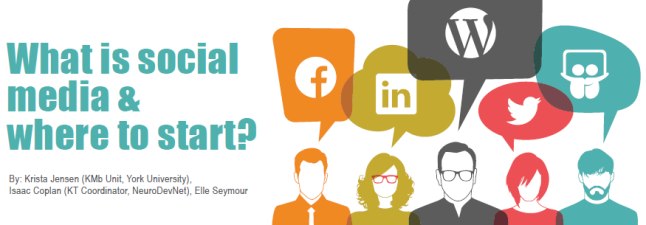by Isaac Coplan (KT Coordinator)
A Twitter chat is a live chat event on twitter. It is organized using a unique hashtag that can then be tracked to understand the level of participation. A facilitator asks a series of questions (usually 6) during a pre-scheduled time period (usually lasting an hour). This allows participants to either follow along, or read a transcript at a later date.
“Imagine a business networking event—but without a dress code and with a keyboard instead of a bar. The same social customs apply—courtesy and respect—and it’s a great way to meet new people with similar interests. There are Twitter chats in almost every industry imaginable.” –Nicole Miller of BufferApp (Twitter Chat 101).
Benefits of using a Twitter chat:
- Introduces real time interaction between stakeholders and researchers, service providers and/or policy makers
- Connects people with similar interests online, growing your social network
- Provides a platform for communication that can be saved, measured, and referred to in the future
- Allows people to participate from across the country
- Can work well as one part of an integrated KT strategy by focusing on engagement, feedback and dissemination to a wide audience at a relatively low cost
On November 18, 2014, we worked with CanChild to host a Twitter chat leading up to their family engagement day. Here is the process that we used, organized by approximate time periods.
A successful Twitter chat can be organized over a few weeks.
Three weeks before:
- Choose an original Hashtag: This can be done by searching on Twitter. Try and keep the hashtag as short as possible, without using one that is already in use. Try searching the hashtag on Google first, to make sure that there aren’t any other connotations to the abbreviation.
- Determine a way to collect metrics: Symplur.com allows for a free service that can provide detailed metrics for Twitter chat related to health. However, registration can take a number of weeks; register at least 2-3 weeks in advance.
Two Weeks Before:
- Write questions: Typically Twitter chats last for approximately One hour with a question every 10 minutes. Key participants can be provided with the questions in advance, however typically they are not made public until the event.
- Select Facilitator: The role of the facilitator is to keep the chat moving, and to make sure that questions are being answered in the correct format (this makes it easier for people who want to follow along on the transcript afterwards).
- Choose platform for Twitter chat: tchat.io is one that the KT Core have used in the past. Platforms automatically type in the designated hashtag, and focus only on content related to the chat. There are several other examples – and participants may opt to follow along on Twitter.
- Begin publicizing the Twitter chat through social networks. This should include a brief description of the topic, the hashtag, the time and date.
At the event:
- The Facilitator welcomes participants, and asks them to introduce themselves. This allows others to have a good understanding of who’s involved in the event. The facilitator keeps the conversation on track by asking questions in a timely manner.
- Questions should be asked using the following format:
- While Answers are formatted in the following way:
Facilitators can remind, or inform, participants of the format. This makes it easier for people to follow along by reading the transcript in the future.
After the Event:
The facilitator can create a transcript using Symplur or another platform. In addition, it is also possible to gather metrics that include impressions, participant and reach. You can easily see how many people participated and how many people viewed tweets related to the Twitter chat.
What did the metrics tell us?
In the CanChild Twitter chat there were 41 Participants from across Canada. The posts were viewed 109,351 times (Impressions). Throughout the day of the chat, 344 Tweets Sent. – 268 of those sent during the 1 hour chat.
Twitter chats have the opportunity to quickly engage a large number of people on a specific content matter, and can increase engagement with individuals, organizations or researchers who may otherwise not be able to attend.
Follow NeuroDevNet’s KT Core on Twitter: @NeuroDevNetKT
Follow NeuroDevNet on Twitter: @NeuroDevNet
See a transcript of the Twitter chat Hosted by NeuroDevNetKT and CanChild: #CanChildKT
For more information on how to hose a Twitter chat see:
Steve Cooper’s (Forbes) Ultimate Guide to hosting a Tweet chat
Nicole Miller’s (BufferApp) Twitter Chats 101
For more understanding of how this fits in with a family engagement strategy see “What are some of the ways Neurodevnet is supporting family engagement.”
If you are a NeuroDevNet researcher or trainee, or if you represent one of Canada’s NCEs and would like to know more about NeuroDevNet’s KT Core services please visit our website and/or contact the KT Core.















